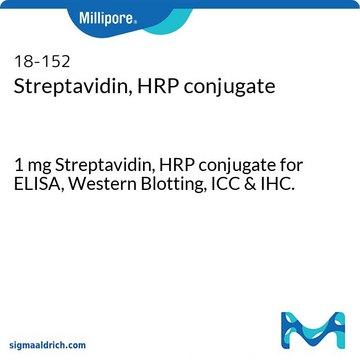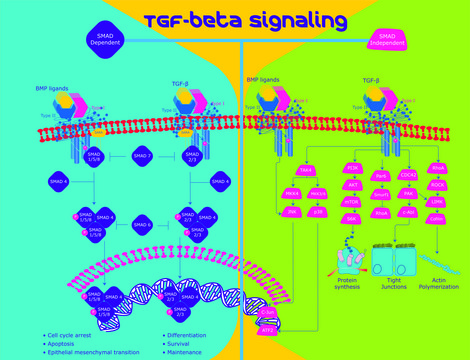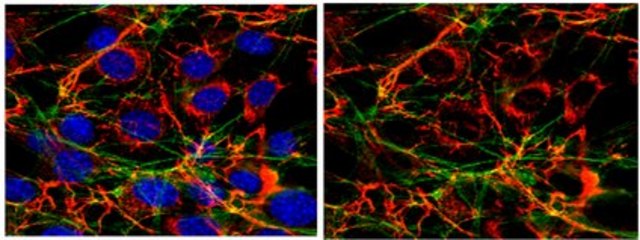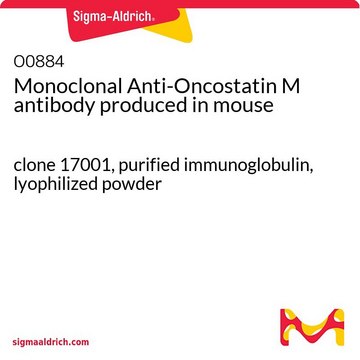일반 설명
We are committed to bringing you greener alternative products, which adhere to one or more of the 12 Principles of Green Chemistry. This antibody is preservative-free, produced without the harm or sacrifice of animals and exceptionally stable to allow for ambient shipping and storage if needed, and thus aligns with "Waste Prevention", "Designing Safer Chemicals" and "Design for Energy Efficiency".
Click here for more information.
ZooMAb® antibodies represent an entirely new generation of recombinant monoclonal antibodies. Each ZooMAb® antibody is manufactured using our proprietary recombinant expression system, purified to homogeneity, and precisely dispensed to produce robust and highly reproducible lot-to-lot consistency. Only top-performing clones are released for use by researchers. Each antibody is validated for high specificity and affinity across multiple applications, including its most commonly used application. ZooMAb® antibodies are reliably available and ready to ship when you need them.
특이성
Clone 1H16 is a ZooMAb® recombinant rabbit monoclonal antibody that specifically detects ARPC5. It targets an epitope within 20 amino acids from the N-terminal region.
면역원
KLH-conjugated linear peptide corresponding to 20 amino acids from the N-terminal region of human ARPC5.
애플리케이션
Quality Control Testing
Evaluated by Western Blotting in mouse brain tissue lysate.
Western Blotting Analysis (WB): A 1:10,000 dilution of this antibody detected ARPC5 in mouse brain tissue lysate.
Tested Applications
Western Blotting Analysis: A 1:1,000 dilution from a representative lot detected ARPC5 in human brain tissue lysate and 1:10,000 dilution detected ARPC5 in human kidney tissue lysate.
Affinity Binding Assay: A representative lot of this antibody bound ARPC5 peptide with at least ten thousand-fold (10,000X) higher than with non-specific control peptide.
Immunocytochemistry Analysis: A 1:1,000 dilution from a representative lot detected ARPC5 in MCF7 cells.
Immunohistochemistry (Paraffin) Analysis: A 1:1,000 dilution from a representative lot detected ARPC5 in human kidney tissue sections.
Note: Actual optimal working dilutions must be determined by end user as specimens, and experimental conditions may vary with the end user.
표적 설명
Actin-related protein 2/3 complex subunit 5 (UniProt: O15511; also known as Arp2/3 complex 16 kDa subunit, p16-ARC) is encoded by the ARPC5 (also known as ARC16) gene (Gene ID: 10092) in human. It is one of the seven components of the Arp2/3 complex critical for nucleation of new actin filaments and plays a critical role in the regulation of the actin cytoskeleton. The Arp2/3 complex is involved in regulation of actin polymerization and, together with an activating nucleation-promoting factor (NPF), mediates the formation of branched actin networks. ARPC5 is a small protein, typically comprising around 16 kDa. It is structurally characterized by a β-sheet core surrounded by -helices, contributing to the stabilization of the overall ARP2/3 complex structure. It is primarily localized in the cytoplasm and also found in cell projections and nucleus. The Arp2/3 complex also promotes actin polymerization in the nucleus, thereby regulating gene transcription and repair of damaged DNA. ARPC5 is ubiquitously expressed in several different tissue and cell types. Alternatively spliced transcript variants encoding 2 different isoforms have been observed for this gene. Abnormal actin dynamics due to altered ARPC5 function can contribute to cancer progression, as changes in cell motility and invasion are hallmarks of cancer metastasis. Additionally, defects in ARP2/3 complex components, including ARPC5, have been linked to neurodevelopmental disorders and immunodeficiencies, where proper actin cytoskeleton regulation is vital for neuronal development and immune cell function. This ZooMAb® recombinant monoclonal antibody, generated by our proprietary technology, offers significantly enhanced specificity, affinity, reproducibility, and stability over conventional monoclonals.
물리적 형태
Purified recombinant rabbit monoclonal antibody IgG, lyophilized in PBS with 5% Trehalose, normal appearance a coarse or translucent resin. The PBS/trehalose components in the ZooMAb formulation can have the appearance of a semi-solid (bead like gel) after lyophilization. This is a normal phenomenon. Please follow the recommended reconstitution procedure in the data sheet to dissolve the semi-solid, bead-like, gel-appearing material. The resulting antibody solution is completely stable and functional as proven by full functional testing. Contains no biocide or preservatives, such as azide, or any animal by-products. Larger pack sizes provided as multiples of 25 µL.
재구성
Reconstitute lyophilized antibody pellet with 25μL of ultrapure water or Phosphate Buffered Saline (PBS). Please refer to our
reconstitution protocol and the specific application guidance on the suggested starting dilutions and sample type.
저장 및 안정성
Recommend storage of lyophilized product at 2-8°C; Before reconstitution, micro-centrifuge vials briefly to spin down material to bottom of the vial; Reconstitute each vial by adding 25 µL of filtered lab grade water or PBS; Reconstituted antibodies can be stored at 2-8°C, or -20°C for long term storage. Avoid repeated freeze-thaws.
법적 정보
ZooMAb is a registered trademark of Merck KGaA, Darmstadt, Germany
면책조항
Unless otherwise stated in our catalog or other company documentation accompanying the product(s), our products are intended for research use only and are not to be used for any other purpose, which includes but is not limited to, unauthorized commercial uses, in vitro diagnostic uses, ex vivo or in vivo therapeutic uses or any type of consumption or application to humans or animals.










